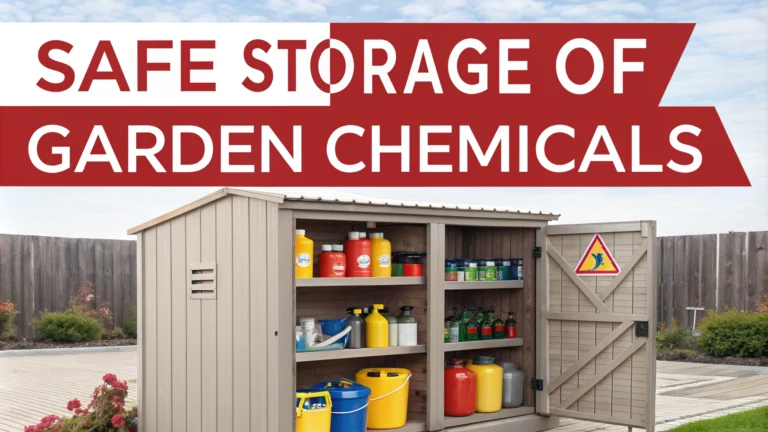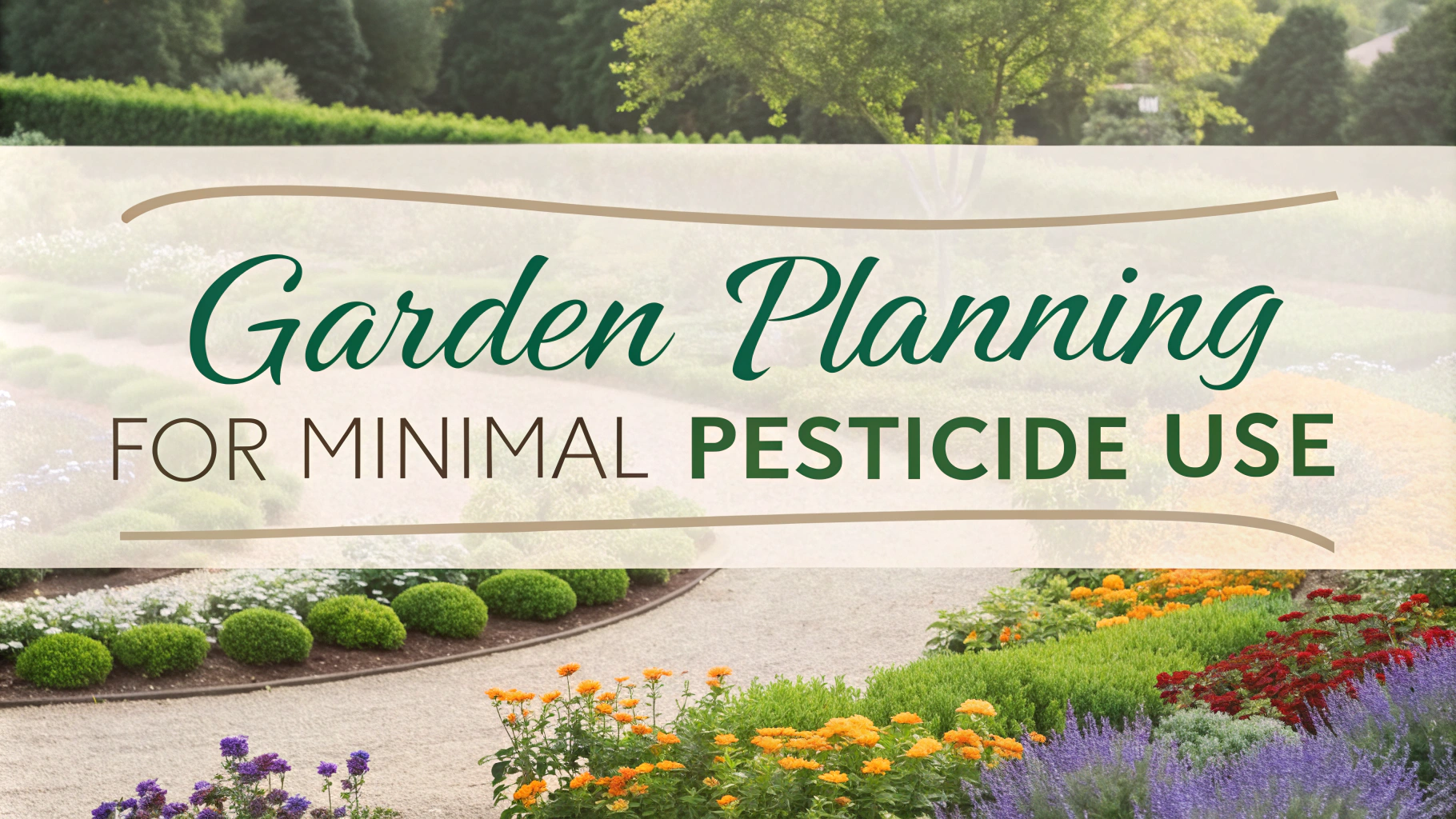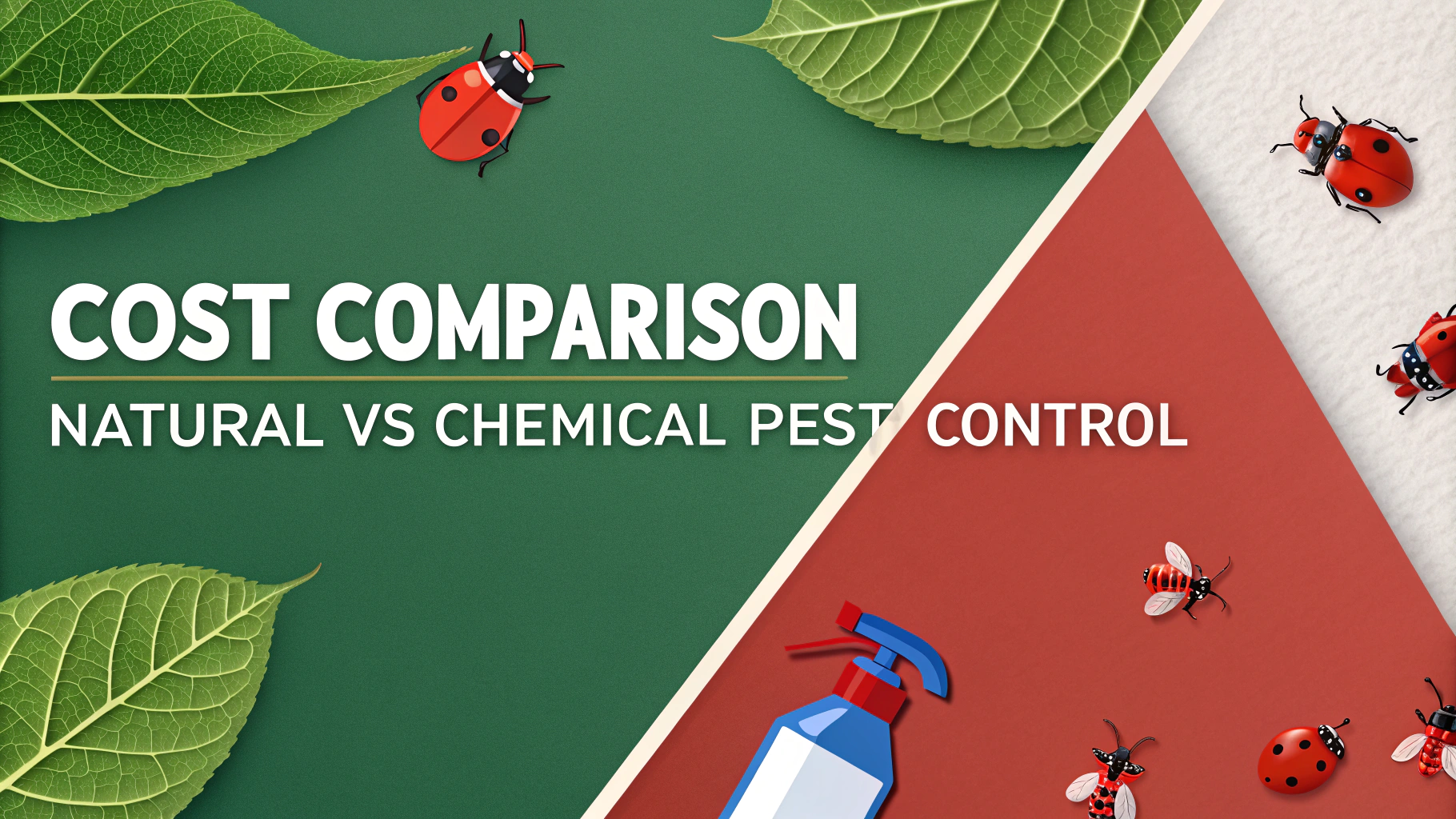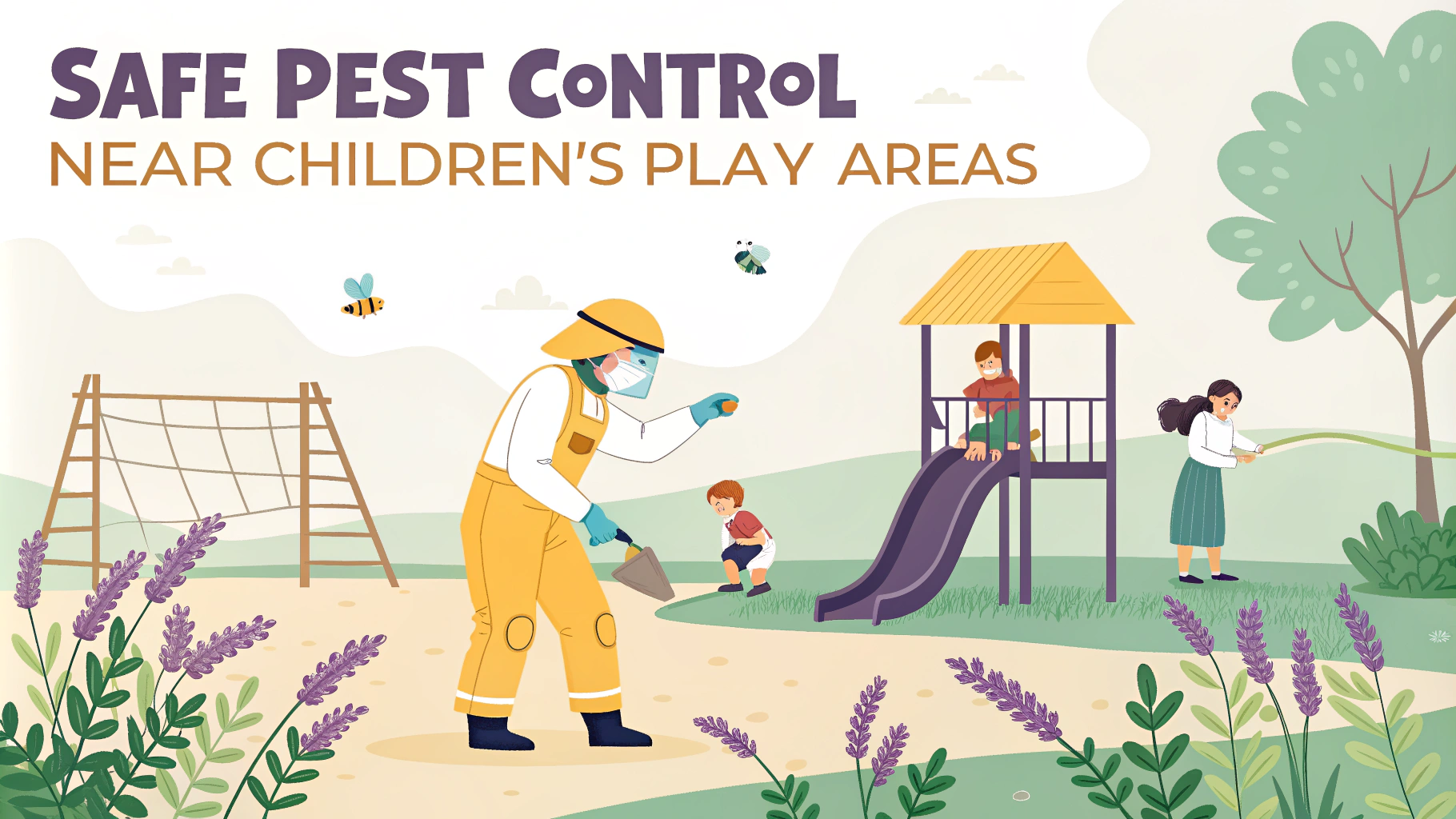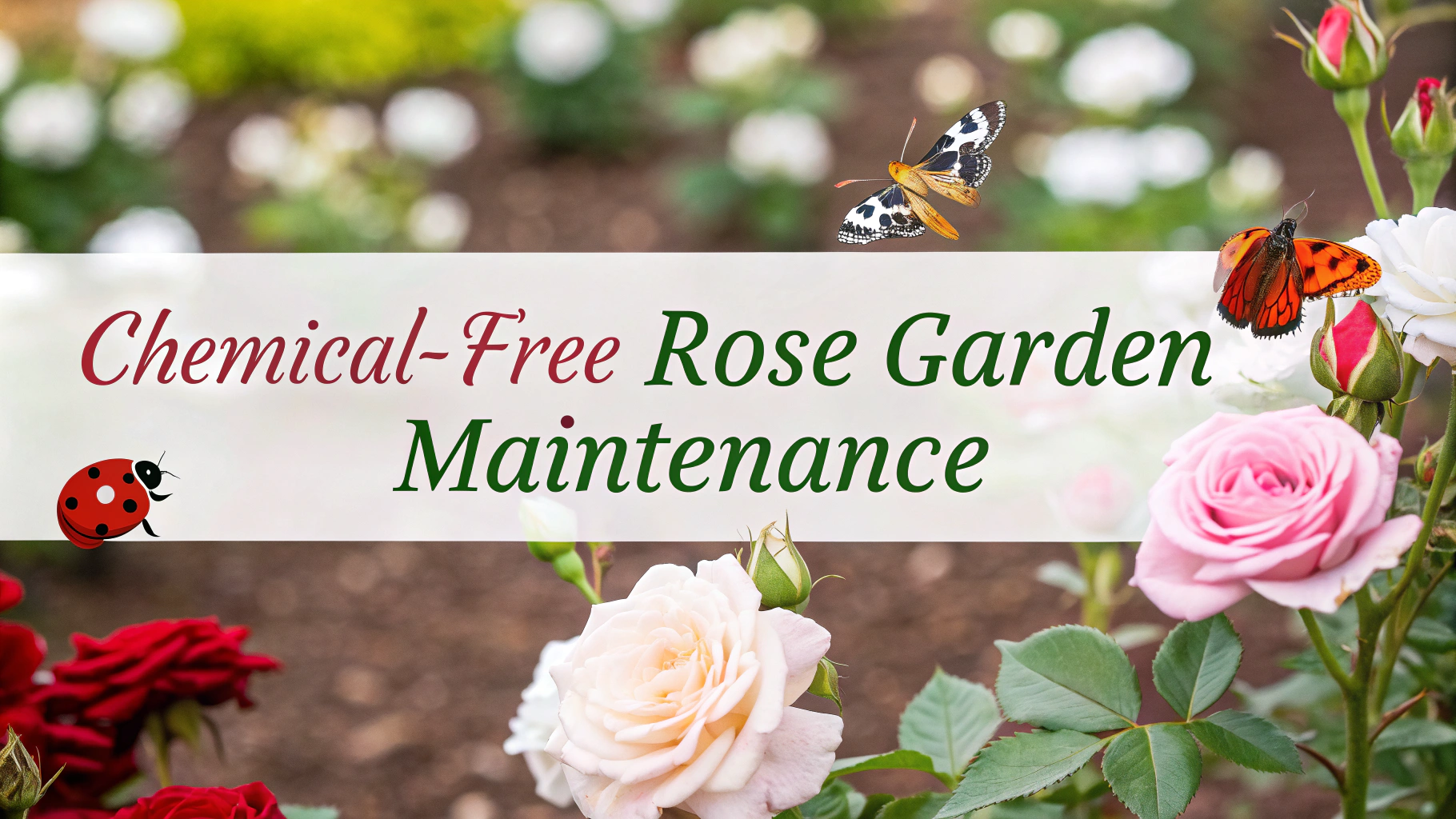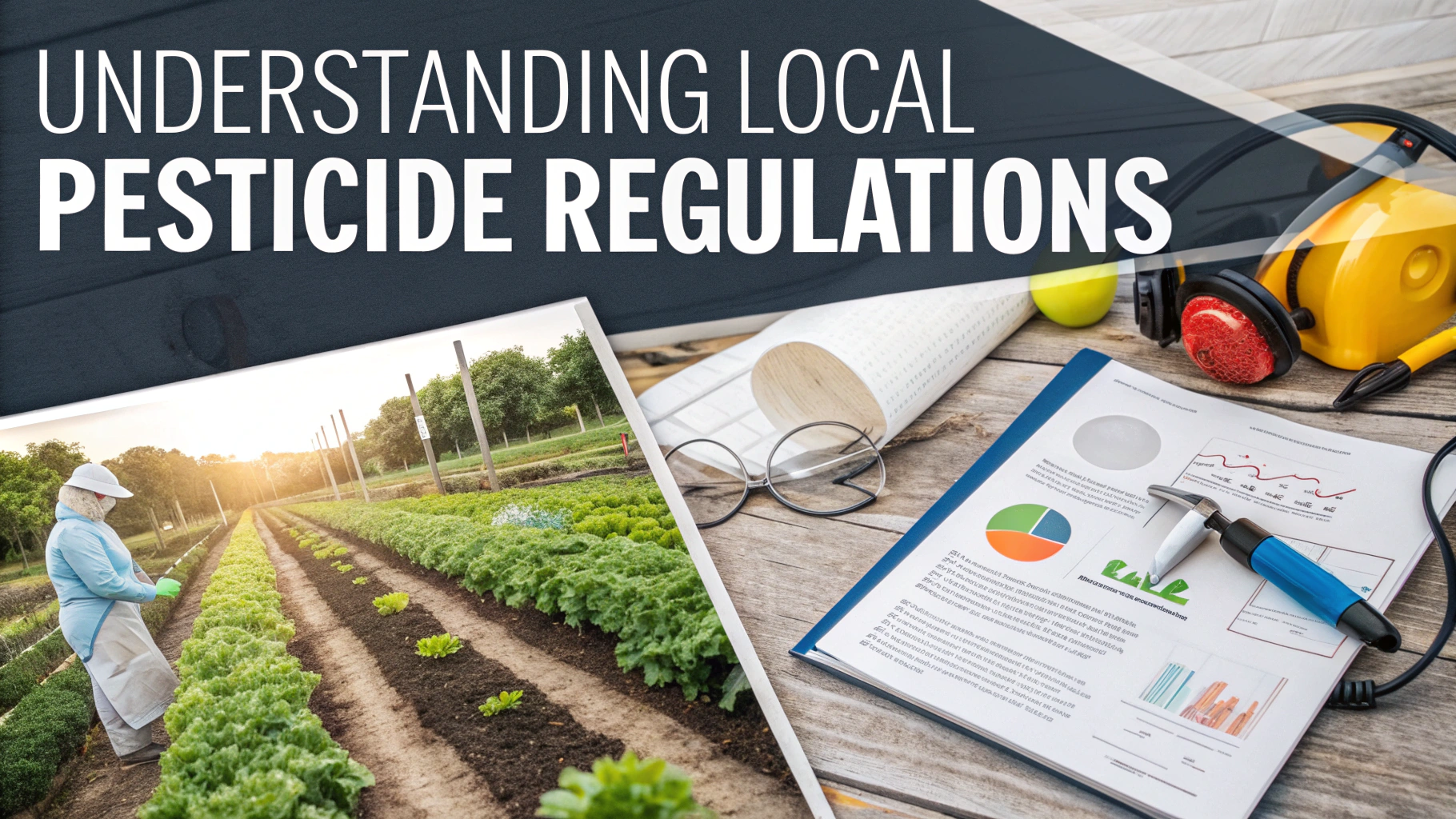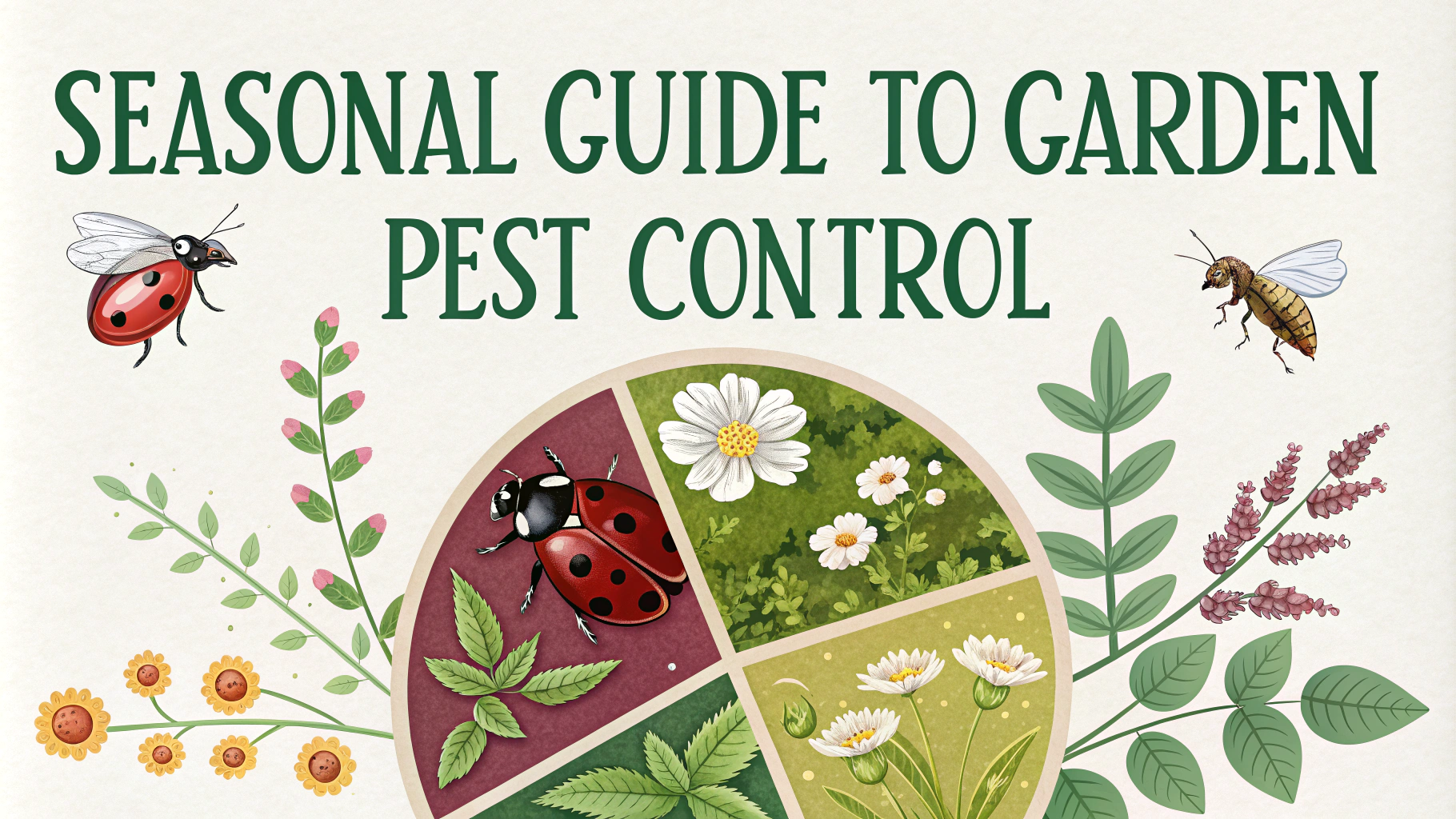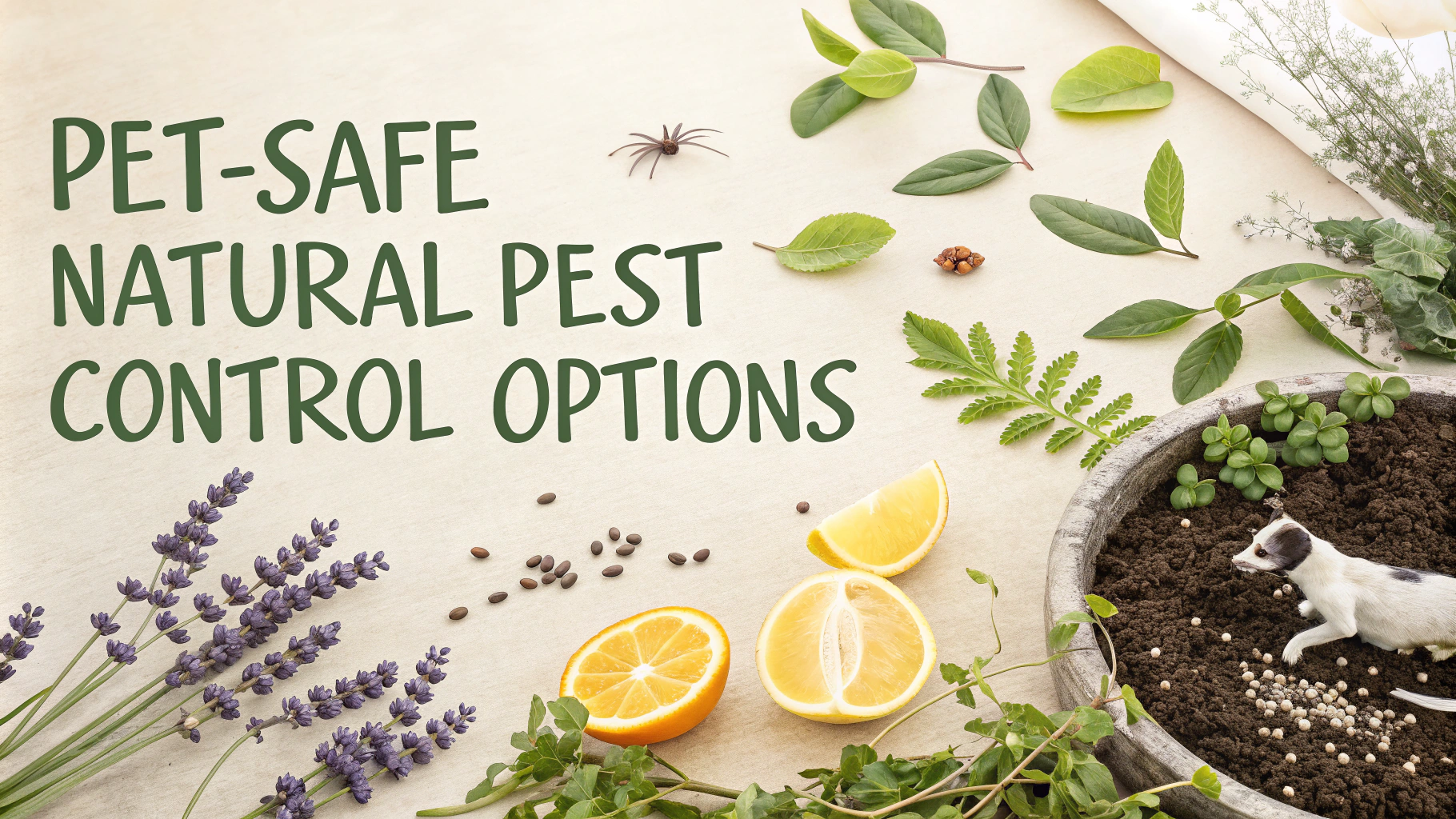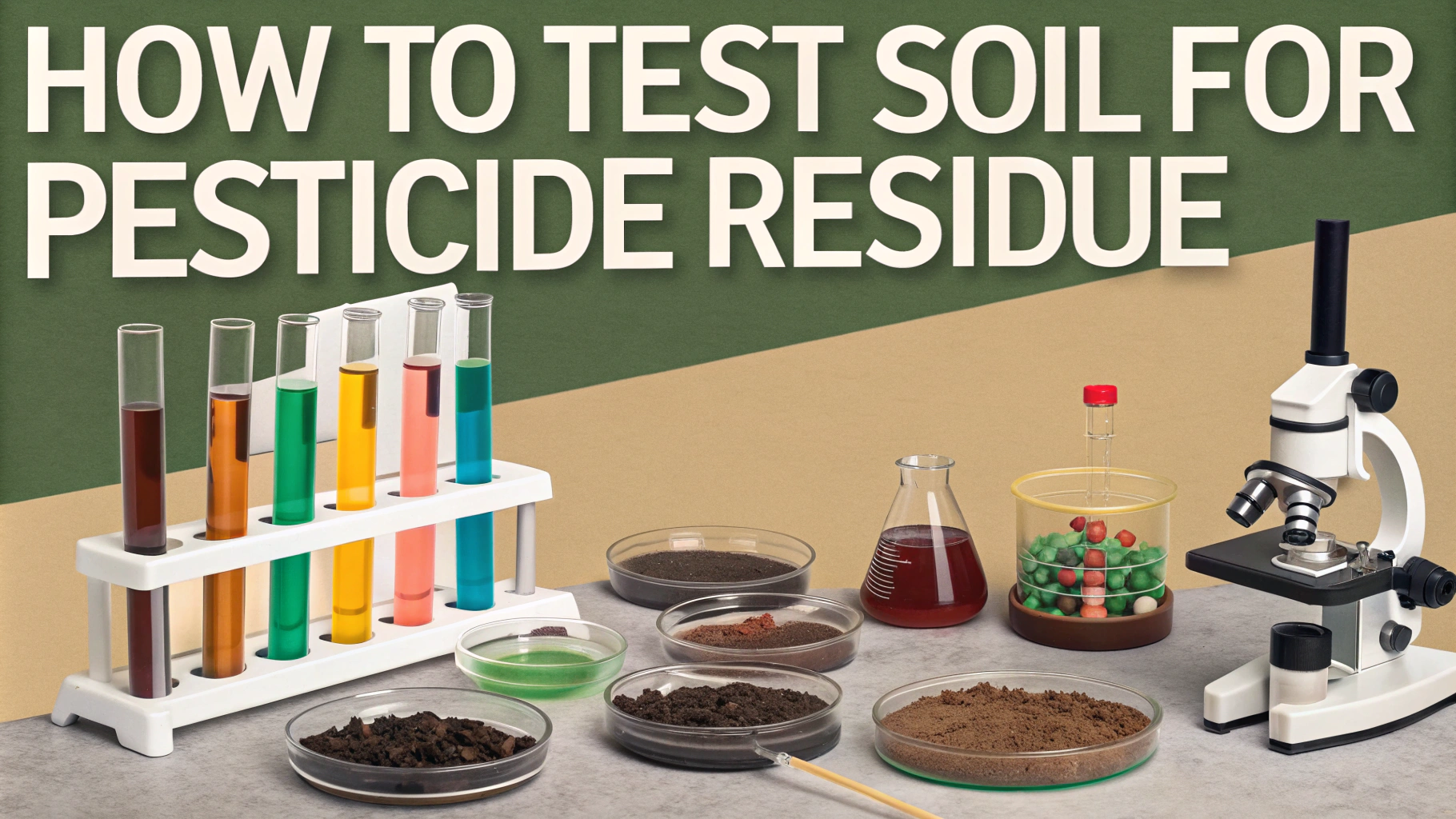Storing garden chemicals and pesticides properly protects your family, pets, and the environment while maintaining product effectiveness.
Basic Storage Requirements
All garden chemicals must be stored in their original containers with intact labels – never transfer them to food or drink containers.
Keep chemicals in a locked, well-ventilated cabinet or storage unit away from direct sunlight and extreme temperatures.
The storage area should be elevated to prevent flooding and located away from living spaces, food storage, and water sources.
Storage Location Recommendations
- Dedicated garden shed
- Lockable outdoor cabinet
- Separate garage storage unit
- Metal storage container with ventilation
Organization Tips
Store different types of chemicals separately to prevent cross-contamination:
| Chemical Type | Storage Notes |
|---|---|
| Herbicides | Keep away from other garden products to prevent drift damage |
| Insecticides | Store on separate shelf from herbicides |
| Fertilizers | Keep dry and away from pesticides |
Safety Measures
- Install smoke detectors near chemical storage areas
- Keep a fire extinguisher rated for chemical fires nearby
- Post emergency numbers including the Poison Control Center: 1-800-222-1222
- Store protective equipment (gloves, masks) near but separate from chemicals
Container Management
Place chemicals in leak-proof secondary containers to catch spills from damaged primary containers.
Check containers regularly for leaks, deterioration, or damage.
Never store chemicals in containers without proper labeling.
Disposal Guidelines
Contact your local waste management facility for proper disposal procedures – never pour chemicals down drains or into soil.
Many communities offer hazardous waste collection events – check your local government website for schedules.
Emergency Preparedness
- Keep absorbent materials (cat litter, sand) nearby for spill containment
- Maintain a first aid kit in an easily accessible location
- Create an emergency response plan and share it with family members
For additional information on chemical storage safety, contact your local extension office or visit the EPA’s Safe Pesticide Control website.
Record Keeping
Maintain a detailed inventory of stored chemicals including:
- Purchase dates and quantities
- Usage records and application dates
- Expiration dates
- Safety Data Sheet (SDS) copies
Seasonal Maintenance
Spring Review
- Check containers for winter damage
- Update inventory list
- Verify all labels are legible
- Test ventilation systems
Fall Preparation
- Dispose of expired products
- Clean storage area thoroughly
- Inspect seals on storage containers
- Ensure heating/cooling systems work properly
Environmental Considerations
Proper chemical storage helps prevent:
- Groundwater contamination
- Soil pollution
- Air quality issues
- Wildlife exposure
Conclusion
Safe storage of garden chemicals requires ongoing attention to proper containment, organization, and safety protocols. Regular maintenance, detailed record-keeping, and awareness of proper disposal methods ensure protection for both family and environment. Stay informed about local regulations and maintain emergency preparedness for optimal chemical storage management.
Review your storage practices annually and update procedures as needed to maintain the highest safety standards.
FAQs
- What is the safest place to store garden pesticides and chemicals?
Store garden chemicals in a locked cabinet or storage area that is cool, dry, well-ventilated, and out of direct sunlight. The storage area should be inaccessible to children and pets, and preferably away from living spaces, food storage, and water sources. - Should I keep garden chemicals in their original containers?
Yes, always keep pesticides and chemicals in their original containers with intact labels. Never transfer them to food or beverage containers, as this can lead to dangerous misidentification and accidental poisoning. - What temperature is safe for storing garden chemicals?
Most garden chemicals should be stored between 40°F and 90°F (4°C-32°C). Avoid freezing temperatures and excessive heat, as these conditions can degrade the chemicals and damage containers. - How long can I store garden pesticides?
Most pesticides remain effective for 2-5 years if stored properly. Check product labels for specific shelf life information and look for signs of degradation such as clumping, separation, or unusual odors. - What should I do with leaking containers?
Place leaking containers inside a larger, sturdy container with absorbent material like cat litter. Contact your local hazardous waste facility for proper disposal instructions. Never attempt to transfer leaking chemicals to new containers. - How should I organize my chemical storage area?
Store powders and granules above liquids to prevent contamination from spills. Group similar products together, ensure all labels are visible, and maintain an inventory list with purchase dates. - What safety equipment should I keep near stored chemicals?
Maintain spill control materials, personal protective equipment (gloves, goggles), fire extinguisher, and emergency contact numbers near the storage area. Also keep a first aid kit readily accessible. - How can I prevent chemical cross-contamination?
Store different types of chemicals separately, use secondary containment trays, and ensure containers are tightly sealed. Keep herbicides separate from other pesticides to prevent accidental plant damage. - What environmental factors should I avoid in chemical storage?
Avoid areas prone to flooding, extreme temperature fluctuations, high humidity, and direct sunlight. These conditions can compromise container integrity and chemical effectiveness. - How should I dispose of empty chemical containers?
Triple rinse empty containers, puncture them to prevent reuse, and dispose according to local regulations. Never burn, bury, or reuse pesticide containers, and check with local authorities about proper disposal methods.
